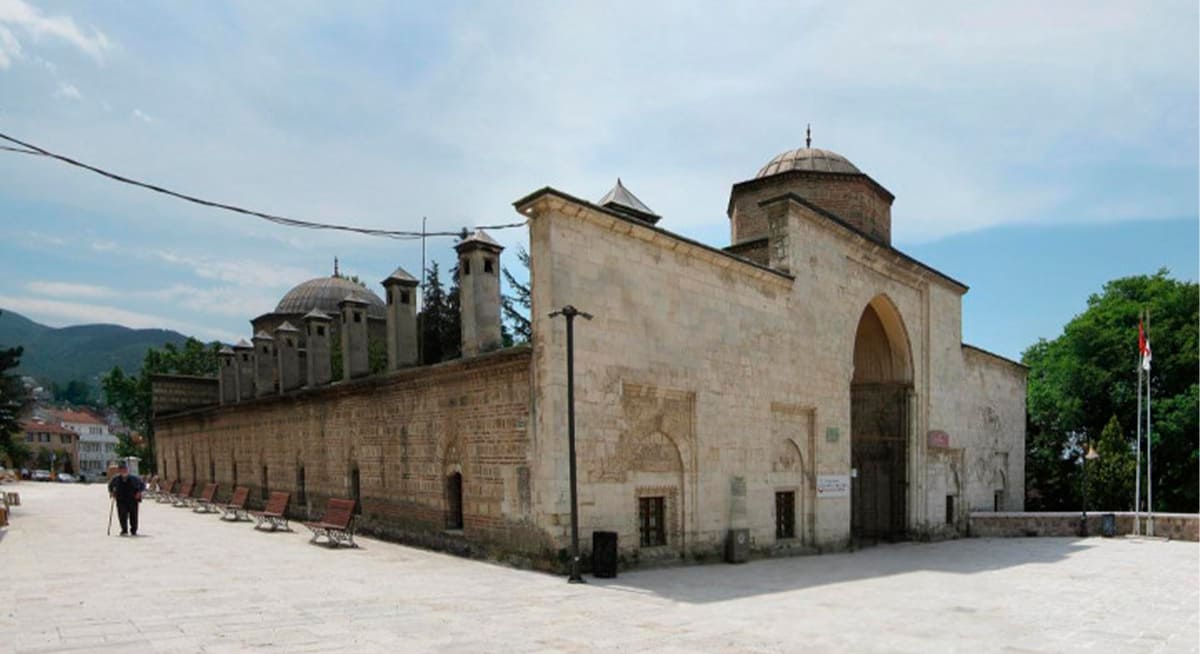Bursa: The City of Four Seasons
Bursa is a unique place known as the city of four seasons. In summer, you can relax on the shores of the Sea of Marmara, only 20 kilometers from the city, and enjoy beautiful beaches and sheltered bays. In spring, there are dozens of green, blooming city parks. Autumn is also wonderful, especially at the Kaplıca springs in the town of Çekirge. Even winter is beautiful, offering travelers the superb ski resort of Uludağ with its excellent ski slopes.
The Uludağ Mountains are just 35 kilometers from Bursa, with peaks reaching around 2,500 meters. Skiing is available here from December to April, with slopes for beginners as well as more challenging runs. The pistes here are «gentle.» The ski center has a total of 22 lifts, providing a stunning view of the pine-covered slopes.
Bursa itself is rich in attractions. For example, the most famous tourist site is the Green Mosque. Its facade is made of white marble, while the interior is adorned with green marble. The Great Mosque stands out for its multiple domes, an unusual feature for modern mosques.
In addition to picturesque ski slopes and beautiful mosques, Bursa is famous for its Turkish baths. The Çekirge area has numerous hot thermal springs known for their healing properties for rheumatism and skin diseases.
The streets of Bursa offer a famous sweet treat, candied chestnuts. We also recommend İskender kebab, a popular local dish. And, of course, don’t forget to pick up unique souvenirs from the area.

The History of Bursa
The first settlements around Bursa appeared 5,200 years ago. In Antiquity, the ancient Greek city of Cius was established here, which was renamed Prusa in 202 BC. In the 1st century BC, the city came under Roman control, and after the fall of the Roman Empire, from the 4th to the 14th century, it was part of Byzantium.
In 1326, Bursa was conquered by the Ottomans and became the first capital of the Ottoman state. After the conquest of Edirne (Adrianople) in Eastern Thrace in 1363, the capital was moved there. During the Ottoman period, Bursa remained an important city known for its silk production.
In 1855, the city was heavily damaged by earthquakes and fires. In 1920, during the Greco-Turkish War, it was occupied by the Greeks, and in 1922, it was returned to Turkey. After the founding of the Turkish Republic, Bursa became one of the country’s main industrial centers. This led to rapid economic and population growth, making it one of the most populous cities in Turkey.
Bursa is an ancient city that blends historical charm with modernity. The heart of the old city is in the area from the square with the statue of Atatürk on a horse to the Silk Bazaar and the Ulu Camii Mosque, where most of the main landmarks are located.
Ulu Camii or the Great Mosque
It is one of the city’s most significant and fascinating landmarks. Built in 1399, it is one of the most outstanding examples of Seljuk religious architecture in Anatolia, strikingly different from the later Ottoman style. The mosque features 20 small domes and two towering minarets. Inside, there is intricate wood carving and panels adorned with calligraphy. One notable feature is its 12 columns, which were brought from the ancient city of Nicaea (now İznik). These columns, carved in the Byzantine style, are believed to date back to the 4th century CE.
Over the centuries, the mosque has undergone several renovations and reconstructions, including the addition of a fountain and a library. The mosque is still in use and is open to visitors for prayer and tours. The Great Mosque is also notable for its location in Bursa’s historic district, which is home to several other important Ottoman-era buildings and landmarks. It’s a popular tourist destination and a symbol of the city’s rich history and culture.
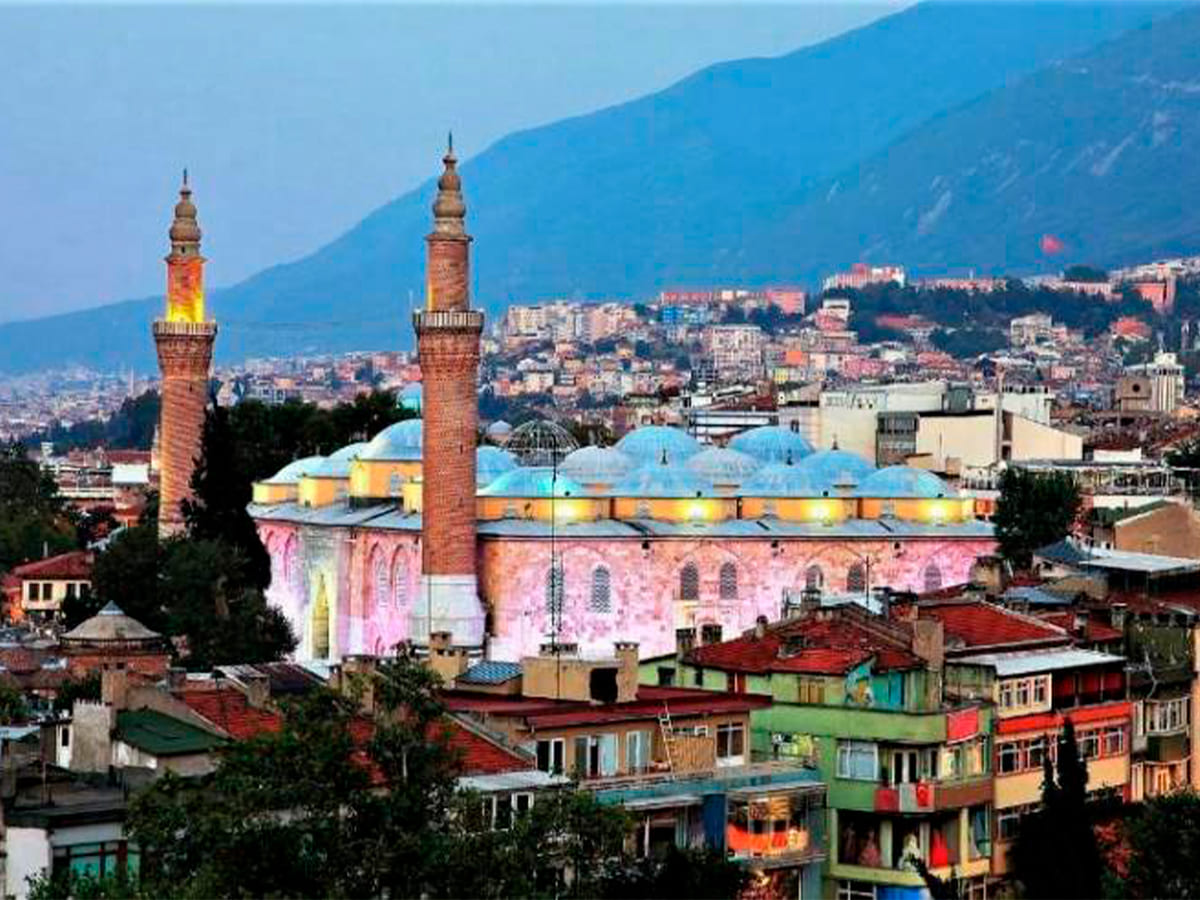
The Green Tomb
One of Bursa’s most important historical landmarks, the Green Tomb was built in the 15th century as a mausoleum for Sultan Mehmed I, the fifth Ottoman sultan and son of Bayezid I. The tomb is unique for its architectural design and decoration, featuring intricate tiles, calligraphy, and glasswork.
The Green Tomb earned its name due to the green tiles covering the exterior, which are a hallmark of Ottoman architecture. These tiles are believed to have been brought from nearby Iznik, renowned in the 15th century for its ceramic production. The interior is just as impressive, with a domed ceiling and ornate calligraphy adorning the walls. In addition to Sultan Mehmed I, several other members of the Ottoman royal family are also buried in the Green Tomb.
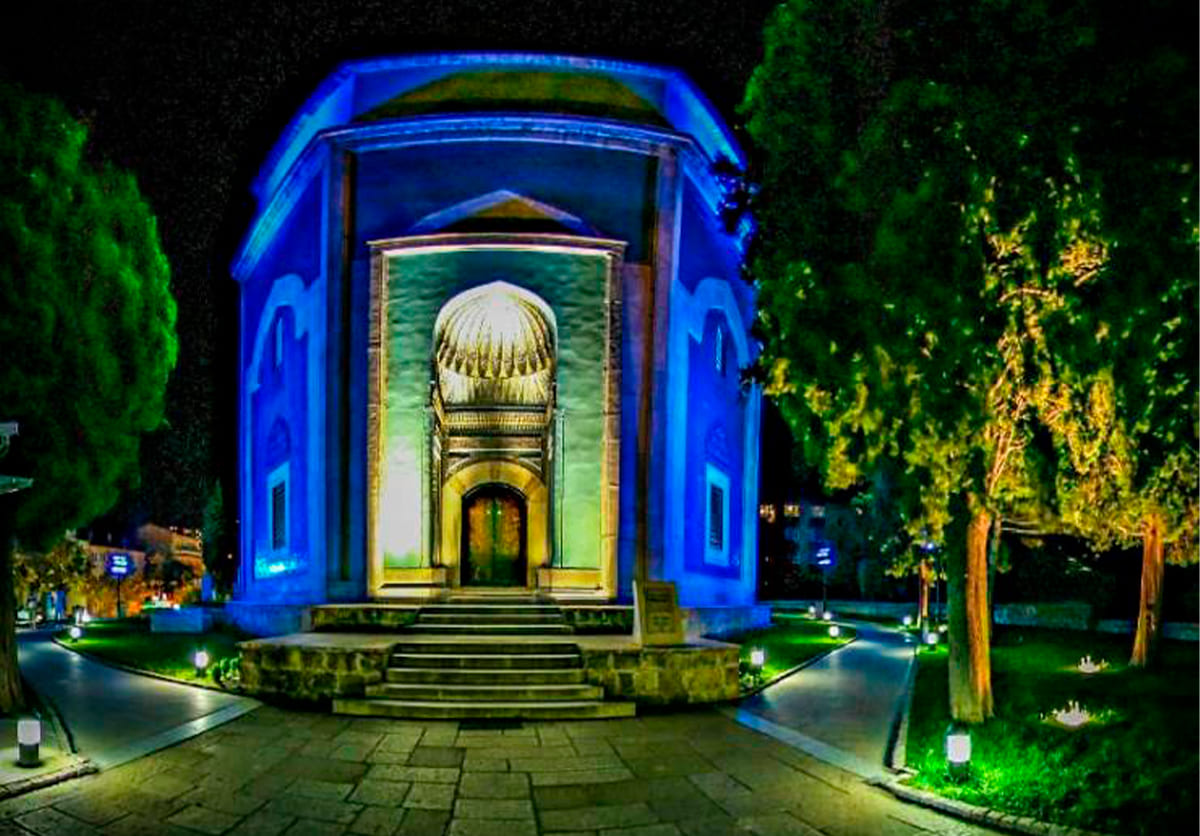
Muradiye
It is a historic complex with a park and an ancient cemetery where early Ottoman sultans and princes are buried. One of the most interesting structures in this complex is the Murad II Mosque, built in 1426.

Bursa Citadel (Bursa Kalesi)
This medieval fortress was built by the Byzantine Empire in the 6th century and later used by the Ottoman Empire. The citadel is situated on a hill overlooking the city of Bursa, offering panoramic views of the surrounding area. Its walls are several meters thick and made of stone, and there are various towers and gates that once served as defensive structures.
Inside the fortress are several buildings used by the Ottoman Empire, including a mosque, a prison, and a treasury. The mosque, built in the 14th century, remains in use today. The fortress served as a military base until the 19th century, after which it was converted into a prison.
Today, the citadel is open to visitors as a tourist attraction and is a popular spot for hiking and picnics.
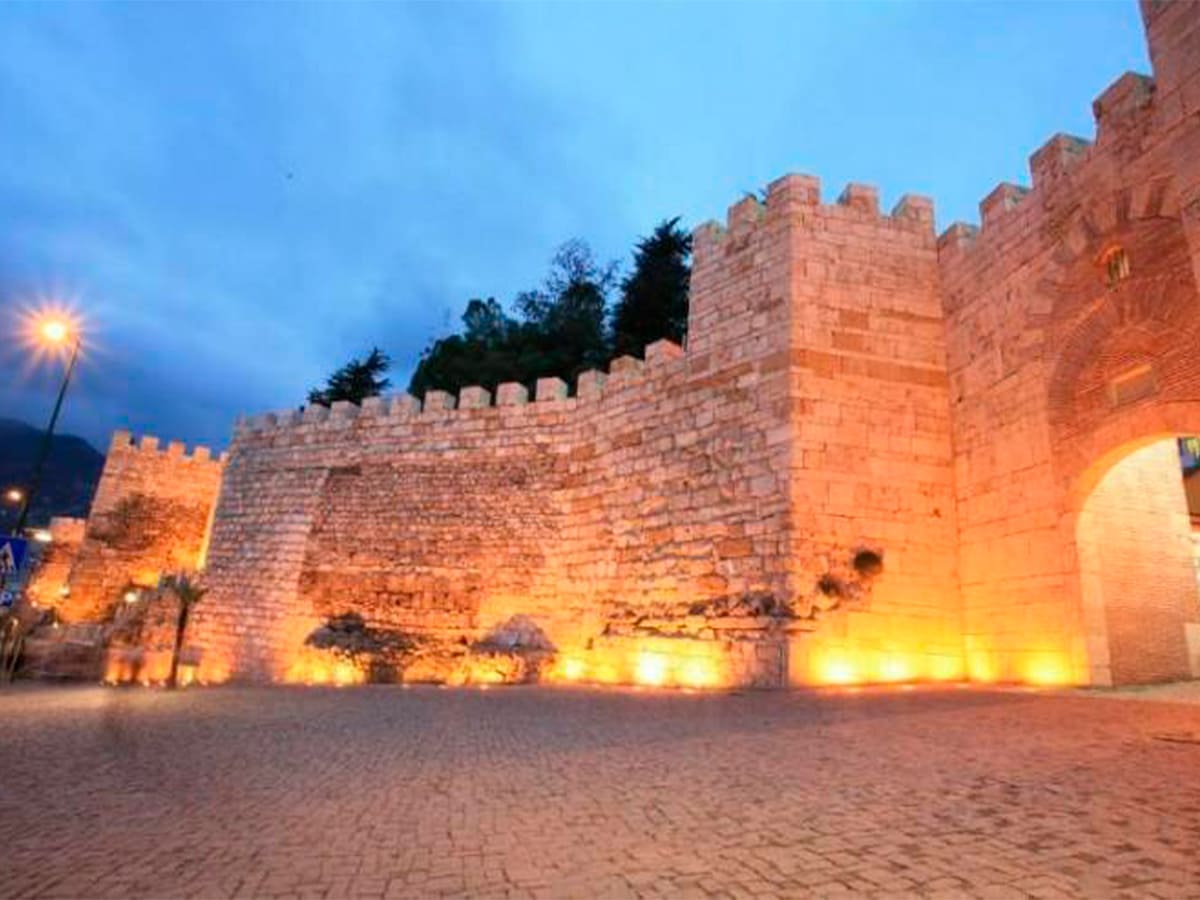
Hisar Gate or Fortress Gate
These ancient gates were originally built during the Byzantine Empire and later restored by the Ottomans in the 14th century. This massive stone structure features two square towers. On the upper level of the gate, there is a balcony that offers views of the city.
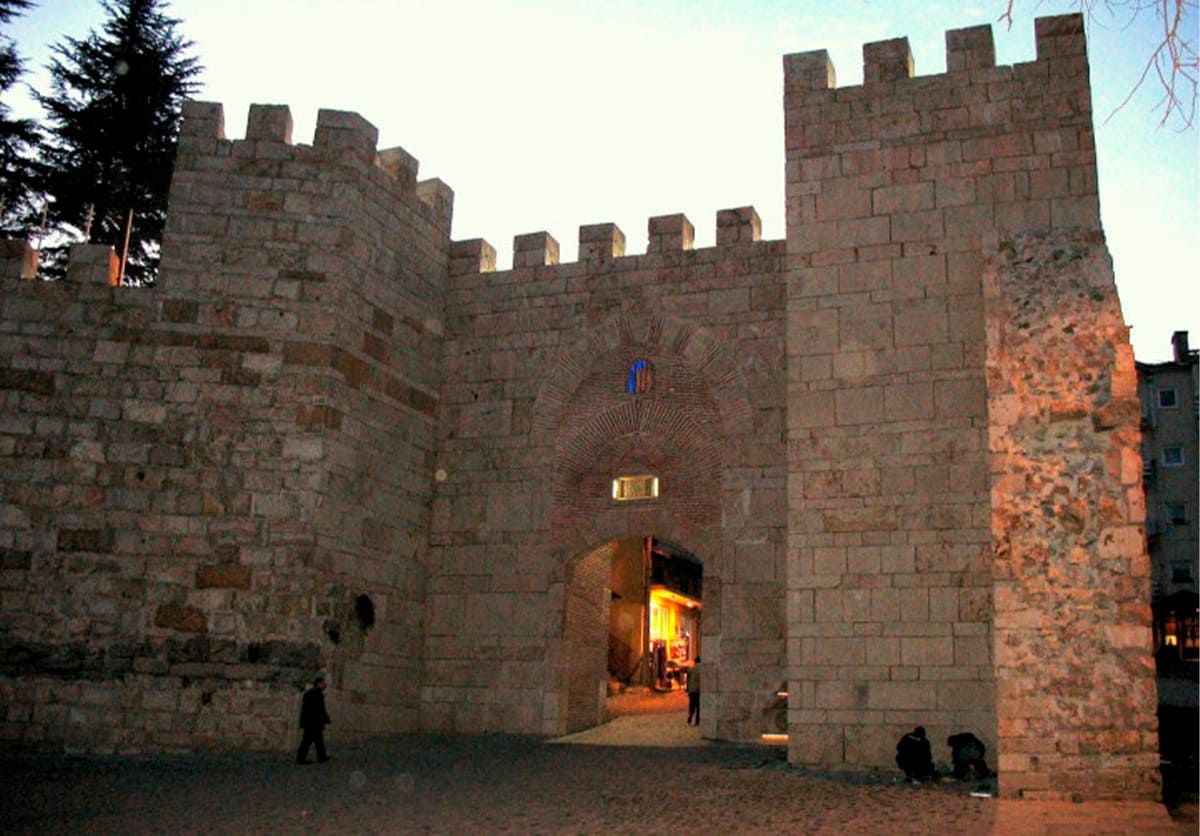
The Tophane Clock Tower
This landmark is located near the tombs of Osman Gazi and Orhan Gazi, within the old citadel’s grounds and among the remains of the city walls. The original structure was built during the reign of Sultan Abdulaziz (between 1861 and 1876) but was later demolished. A new tower was erected in 1904. Positioned on the edge of a cliff, it overlooks the city and is illuminated at night.

The Irgandı Bridge
This arched bridge was built in 1442 during the reign of Murad II and is notable for its unique design and structure. Constructed from cut stone, the bridge features a single arch that spans over a stream, supported by four pillars. There are also two smaller arches on either side of the main arch. The bridge is adorned with decorative elements, including carvings and inscriptions. It is a rare example of a covered bridge with a bazaar on top, reminiscent of the Ponte Vecchio in Florence.
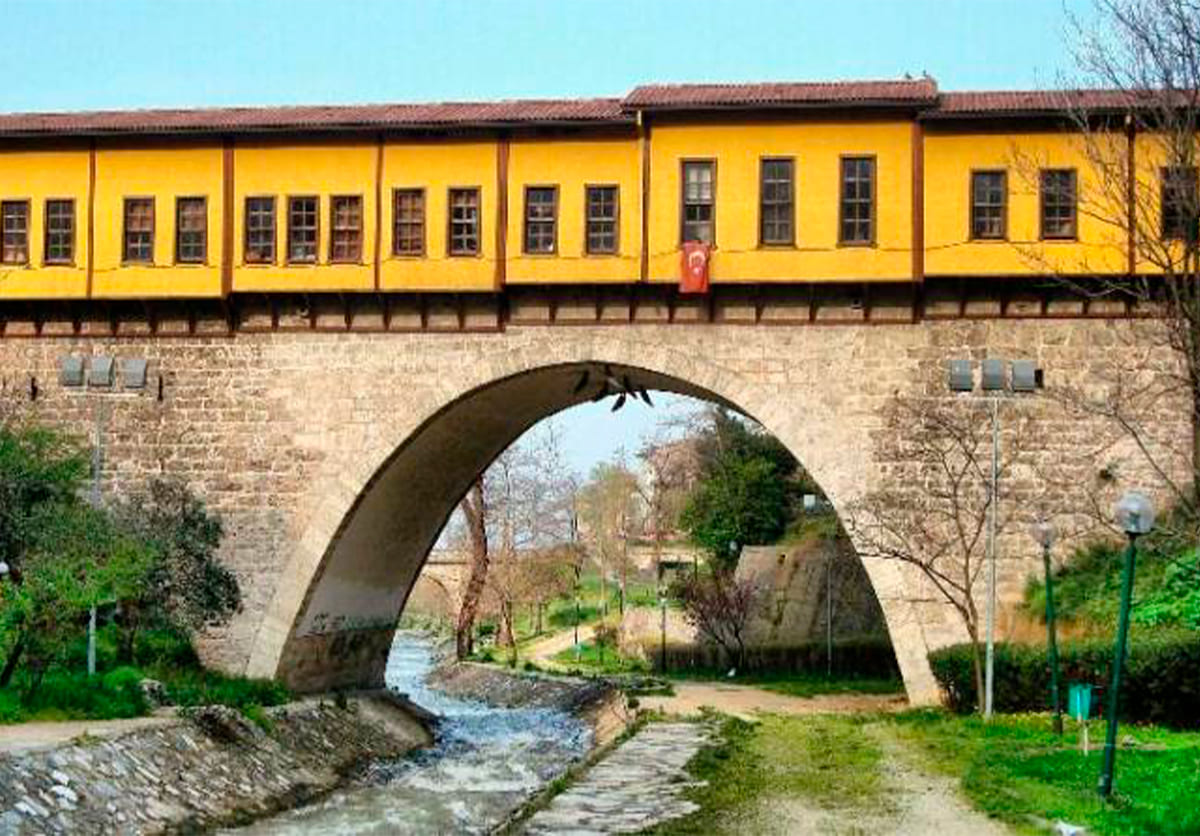
The Setbaşı Bridge
The Setbaşı Bridge is a historic bridge in Bursa, constructed during the Ottoman Empire in the 16th century. It served as a vital link between the Setbaşı and Çekirge districts. This bridge holds an important place in the city’s heritage and has undergone several restorations over the years. It features a unique arched design with stone pillars, highlighting the distinctive Ottoman architectural style.
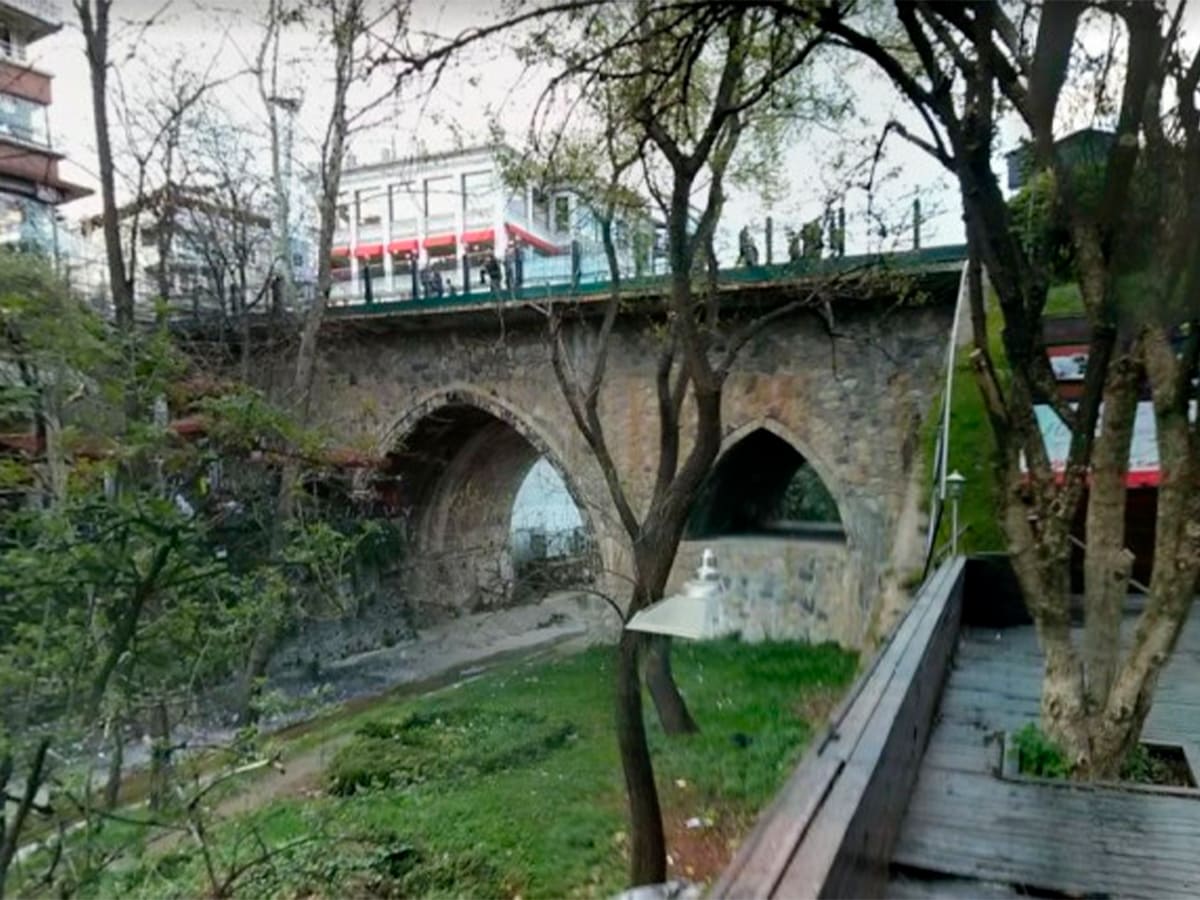
Cemalykızık
Cemalykızık is a small village located 10 km from Bursa, renowned for its stunning historical atmosphere. The village features original old cobblestone streets and over 200 houses from the Ottoman Empire period, many of which still retain their original wrought iron elements.
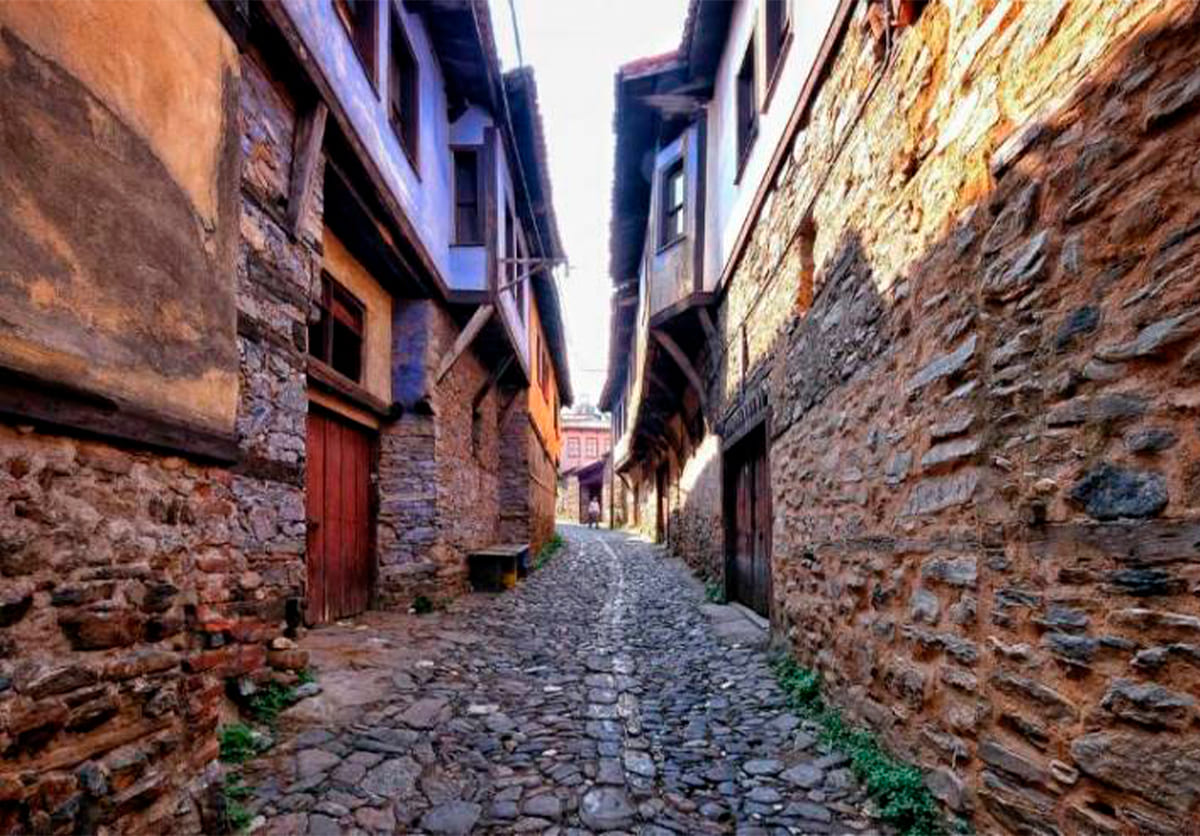
Maxem Mosque
Maxem Mosque is a historic mosque located in Bursa. It was built in the 14th century during the Ottoman Empire and has undergone several reconstructions and restorations throughout its history. The mosque is known for its intricate tiles and calligraphy, as well as its unique architecture that combines Ottoman and Byzantine styles. Additionally, it is noteworthy for its location on a hill, offering a beautiful view of the city of Bursa.
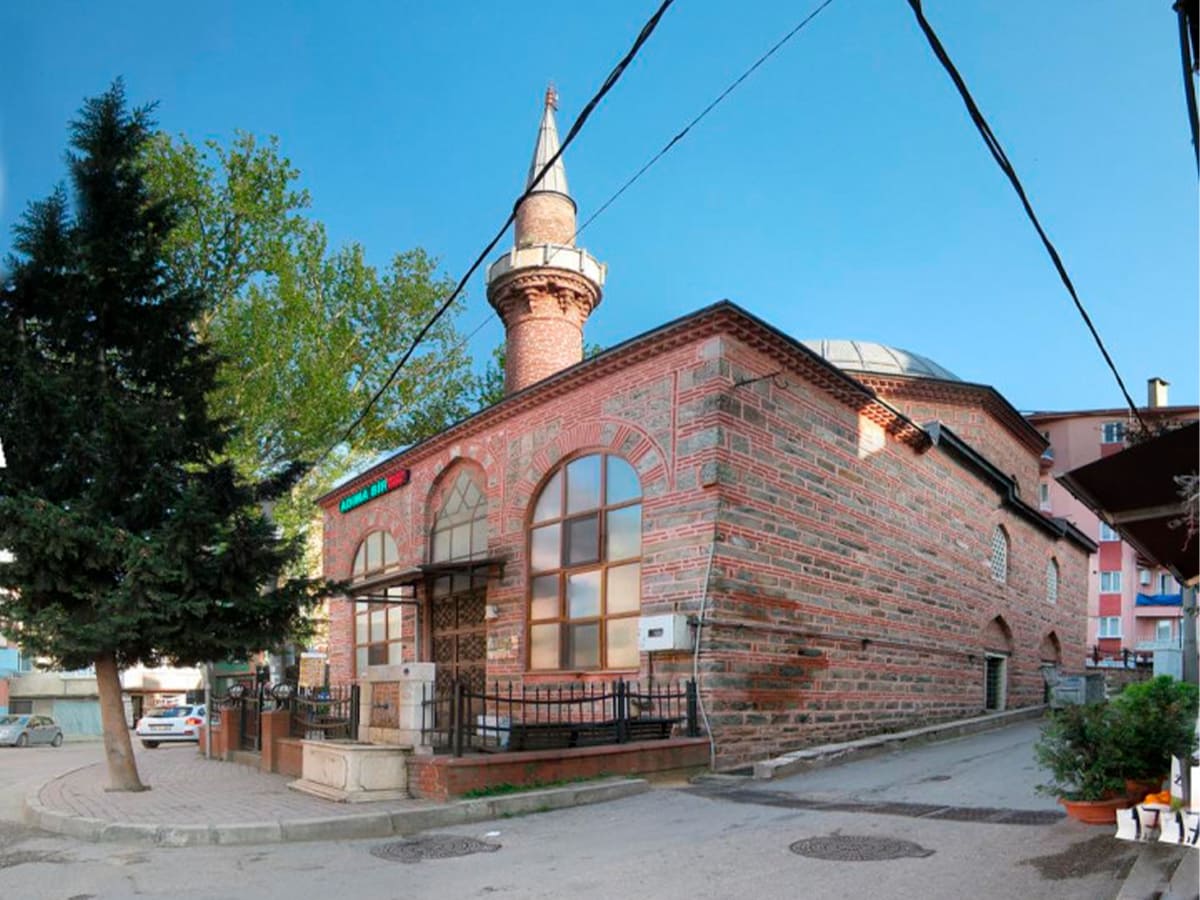
Emir Sultan Mosque
Emir Sultan Mosque is a historic mosque located in Bursa. It was built in the early 14th century and reconstructed in the 19th century. The mosque is named after the Islamic scholar and saint Emir Sultan, who is buried in a tomb located on its premises. The mosque is constructed in a unique architectural style that combines elements of Seljuk and Ottoman architecture. The main prayer hall is a large rectangular space topped with a high dome and flanked by two minarets. The walls are adorned with intricate calligraphy and tiles.
One of the most notable features of the mosque is the spacious inner courtyard, which is surrounded by a covered arcade. The mosque serves as an important pilgrimage site for Muslims who come to visit the tomb of Emir Sultan and pay their respects. Additionally, it is a popular tourist attraction known for its beautiful architecture.
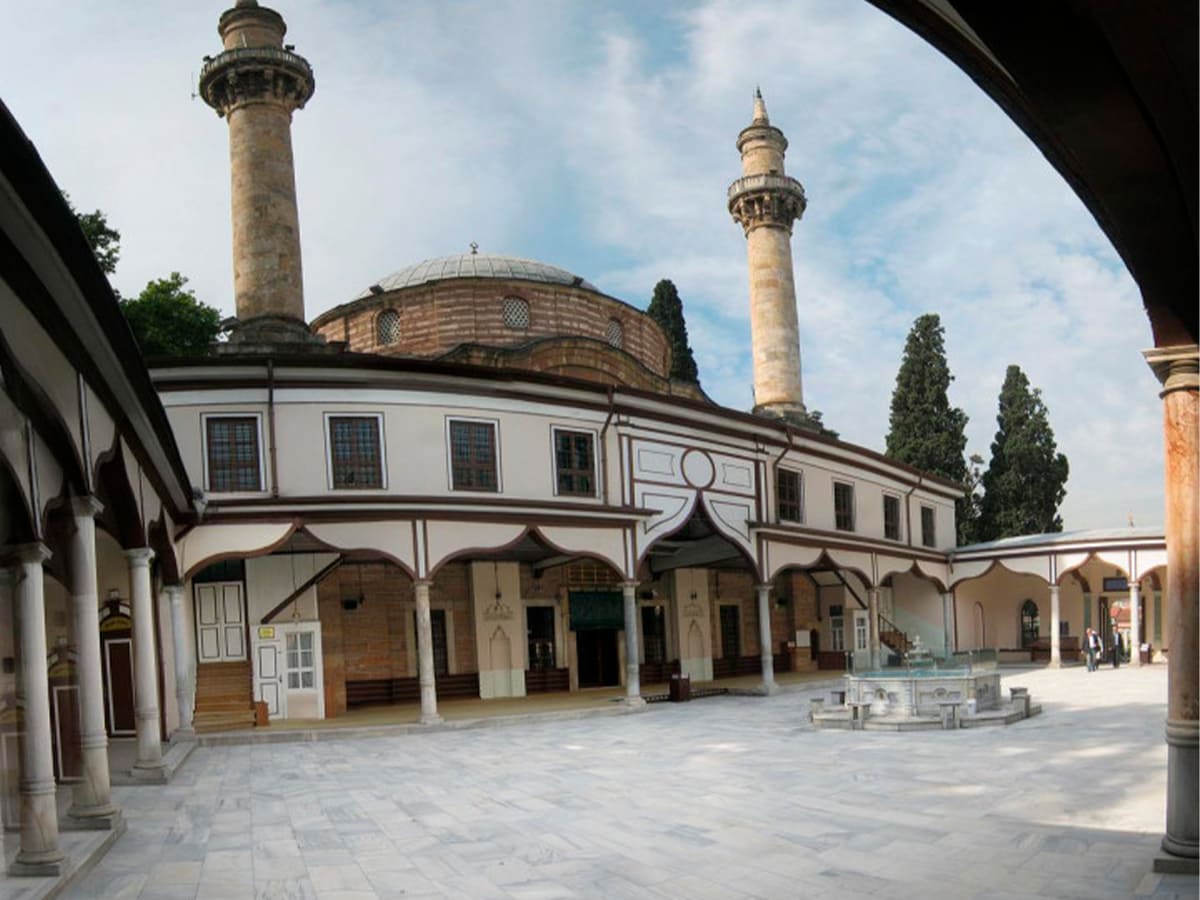
Zeynilere Mosque
Zeynilere Mosque is a historic mosque located in the city of Bursa, built in the 14th century by Ottoman Sultan Murad I. Situated in the Zeynilere district, it is considered one of the most important historical landmarks in the city. Throughout its existence, the mosque has undergone several renovations, including a major restoration in the 19th century.
The architecture of the mosque is typical of the Ottoman style, featuring a large central dome and two minarets. The interior is adorned with intricate calligraphy and tiles, and there is a beautiful fountain in the inner courtyard.
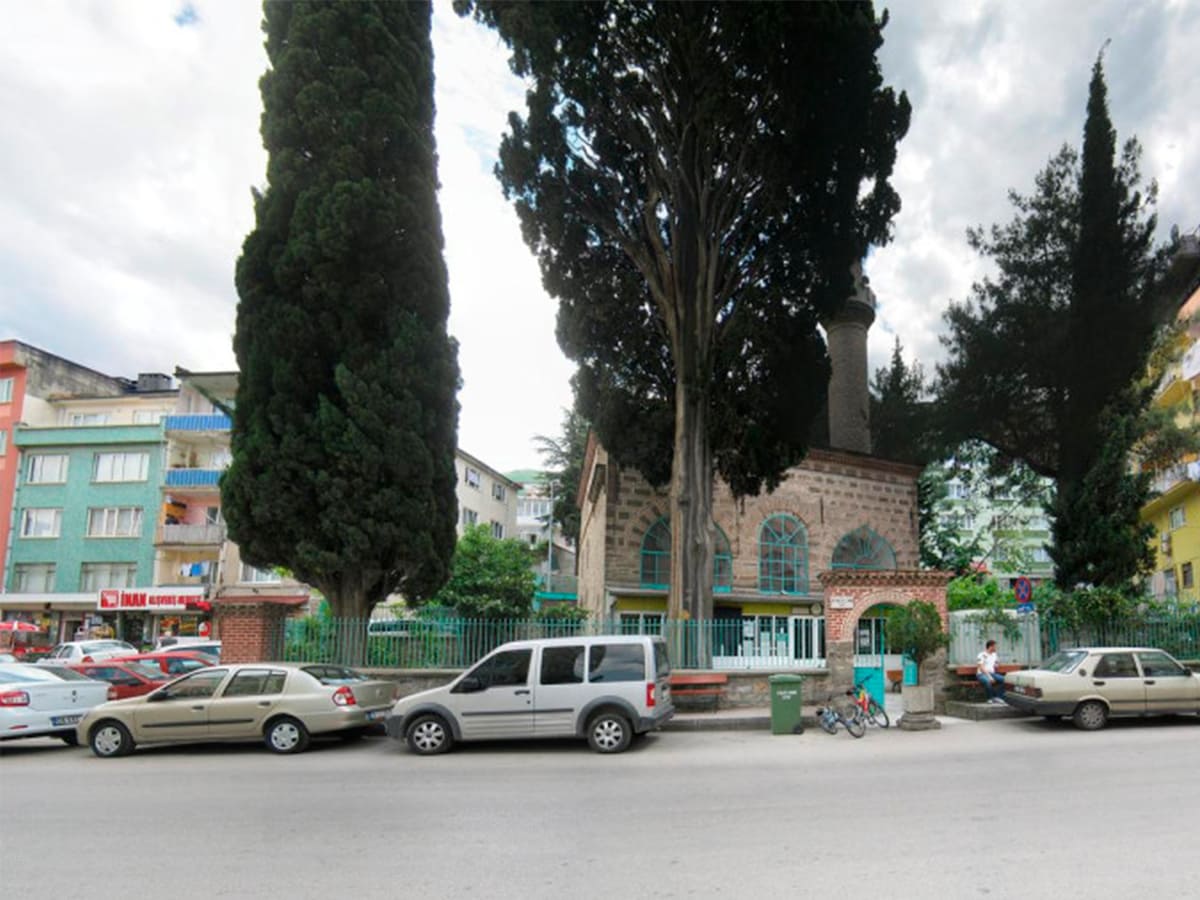
Hokatashkin Mosque
Hokatashkin Mosque was built in the 14th century during the Ottoman Empire and is known for its unique architecture and design. The mosque is named after Hokatashkin, a prominent religious leader who lived in Bursa during the Ottoman era. The interior of the mosque is adorned with intricate tiles and calligraphy, giving it a distinctive beauty and charm.
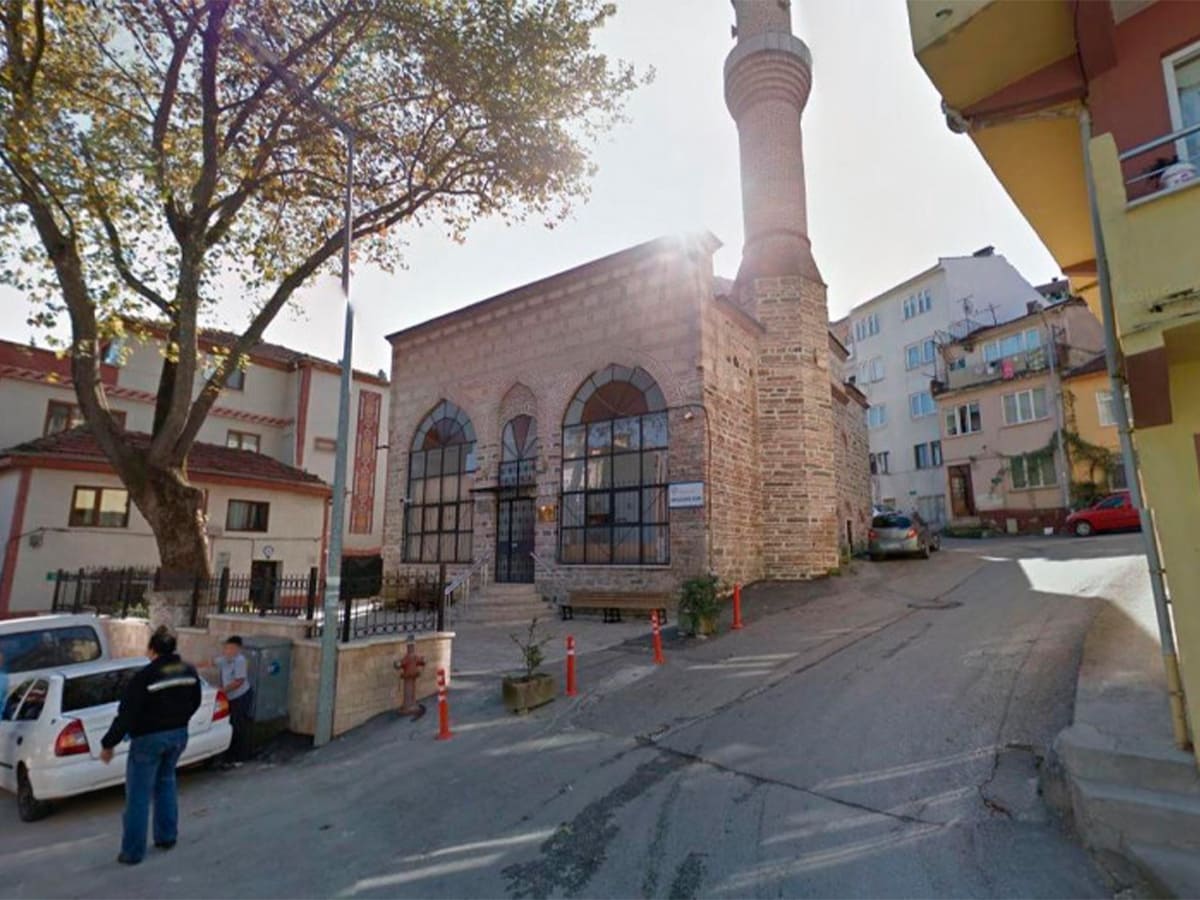
Bayazid Pasha Medrese
The Bayazid Pasha Medrese is a historic Islamic educational institution built in the early 15th century by Bayazid I, also known as «Yıldırım» («Thunderbolt»). The medrese served as a center for the study of Islamic theology, law, and sciences. The building has a rectangular layout with a central courtyard and two floors of surrounding rooms. The entrance features an intricately decorated portal adorned with calligraphy and geometric patterns. The courtyard is surrounded by arched porticoes, with a fountain at its center. The medrese boasts a beautiful interior with elaborate tiles, wooden carvings, and painted decorations. The main prayer hall has a domed ceiling and is decorated with calligraphy and Islamic geometric patterns. The basement of the medrese was used as a kitchen or «imarət» for providing meals to the poor and needy.
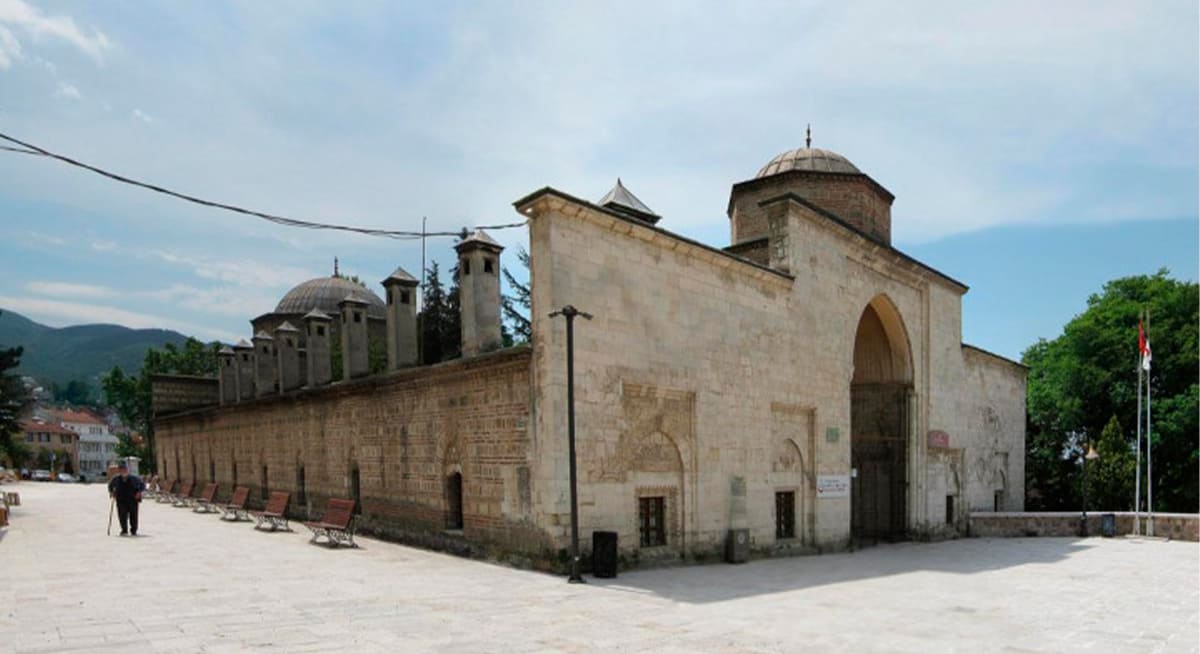
Shible Mosque
The Shible Mosque is a historic mosque built in the 14th century during the reign of the Ottoman Sultan Murad I, named after Sheikh Shible, a well-known Sufi mystic who lived in Bursa during that time. The mosque is renowned for its beautiful architecture and decorative elements, including intricate floral motifs and calligraphy. It features a rectangular layout with a central dome and two smaller domes on each side. The interior is adorned with multicolored tiles and stained glass, creating a serene and tranquil atmosphere.

Selçuk Hatun Mosque
The Selçuk Hatun Mosque is a historic mosque in Bursa, built in the 14th century by Sultan Orhan Gazi, the second ruler of the Ottoman Empire, in honor of his mother. The architecture of the mosque is typical of the Ottoman style, featuring a large central dome surrounded by four smaller domes. The exterior of the building is adorned with intricate tiles and calligraphy. Inside, the mosque offers a peaceful and serene space with simple yet elegant decor. The central dome is supported by four columns, and the walls are decorated with beautiful calligraphy and geometric patterns.
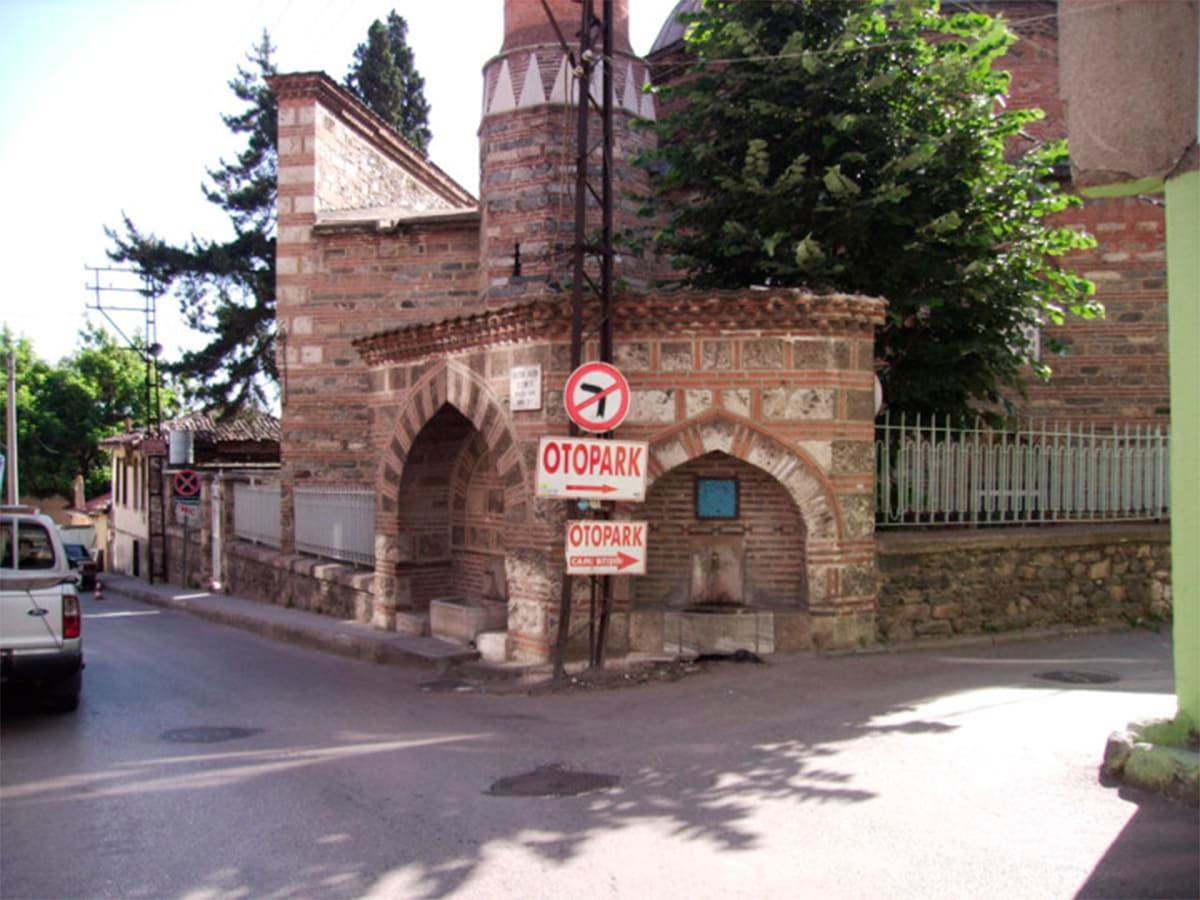
Sehrekustu Mosque
Built in the late 19th century, the Sehrekustu Mosque is a magnificent example of Ottoman architecture, featuring a large dome and two minarets. The interior of the mosque is adorned with intricate calligraphy and colorful tiles, while the exterior boasts beautiful mosaics. The mosque also includes an inner courtyard and a fountain, contributing to a peaceful and tranquil atmosphere.

Bayazid Tomb
The Bayazid Tomb is a historic mausoleum that houses the remains of the fourth Ottoman sultan, who ruled from 1389 to 1402. Located on a hill, it offers a stunning panoramic view of Bursa and its surroundings. The construction of the tomb began during Bayazid’s reign and was completed after his death in 1403. The tomb is rectangular in shape and built from hewn stone, adorned with intricate calligraphy, floral motifs, and geometric patterns. Inside the tomb, there are two sarcophagi, one belonging to the sultan himself and the other to his son, Şehzade Suleiman. The sarcophagi are made of marble and decorated with exquisite carvings.
